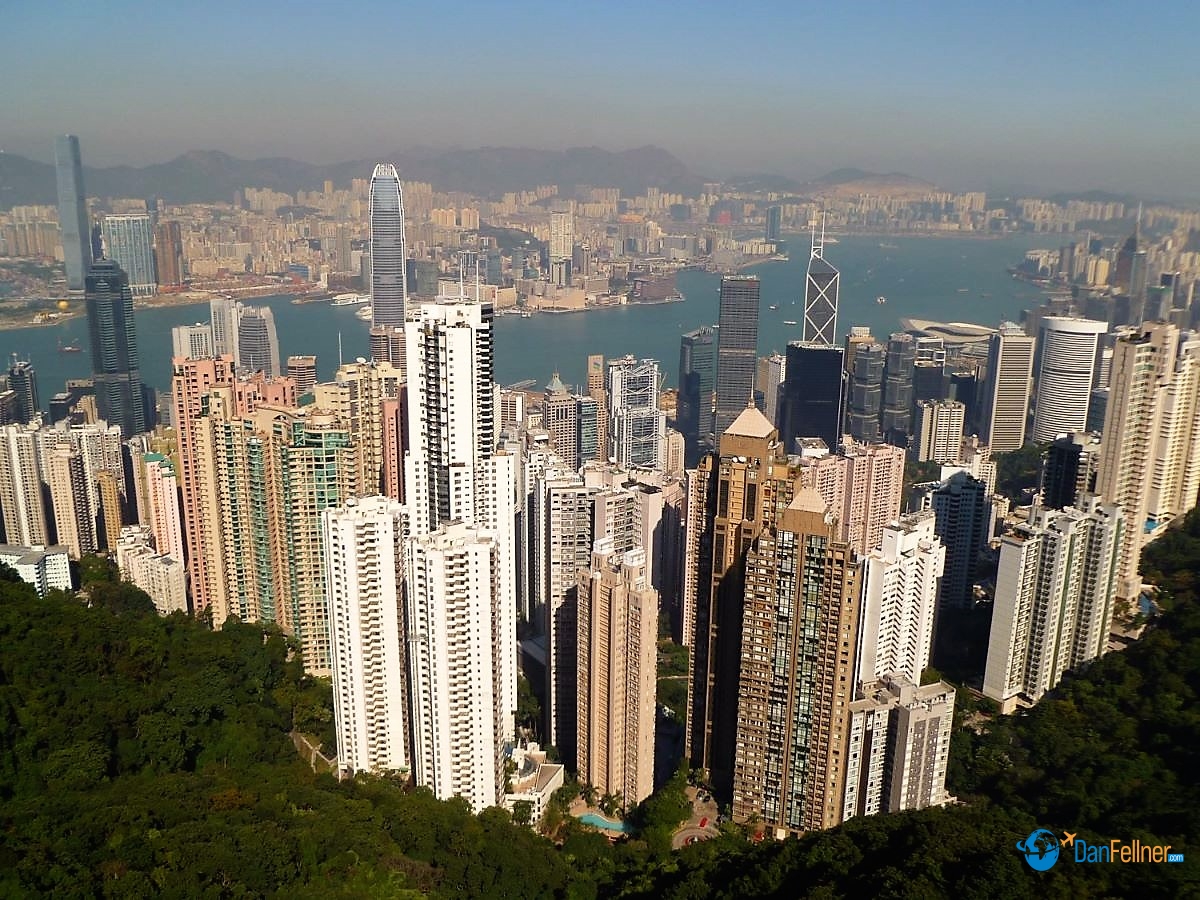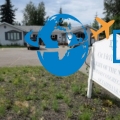World-renowned for its dense maze of skyscrapers, Jews have added a unique twist to the island’s architecture, making for themselves a ‘vertical shtetl.’
Hadassah Magazine – October/November, 2011
Despite concerns when the British handed its colony back to the Chinese in 1997, Hong Kong remains very much open for business. The world’s “freest economy” for the last 16 years — according to the Heritage Foundation — also continues to be a hospitable home to one of the most prosperous and diverse Jewish communities in the diaspora.
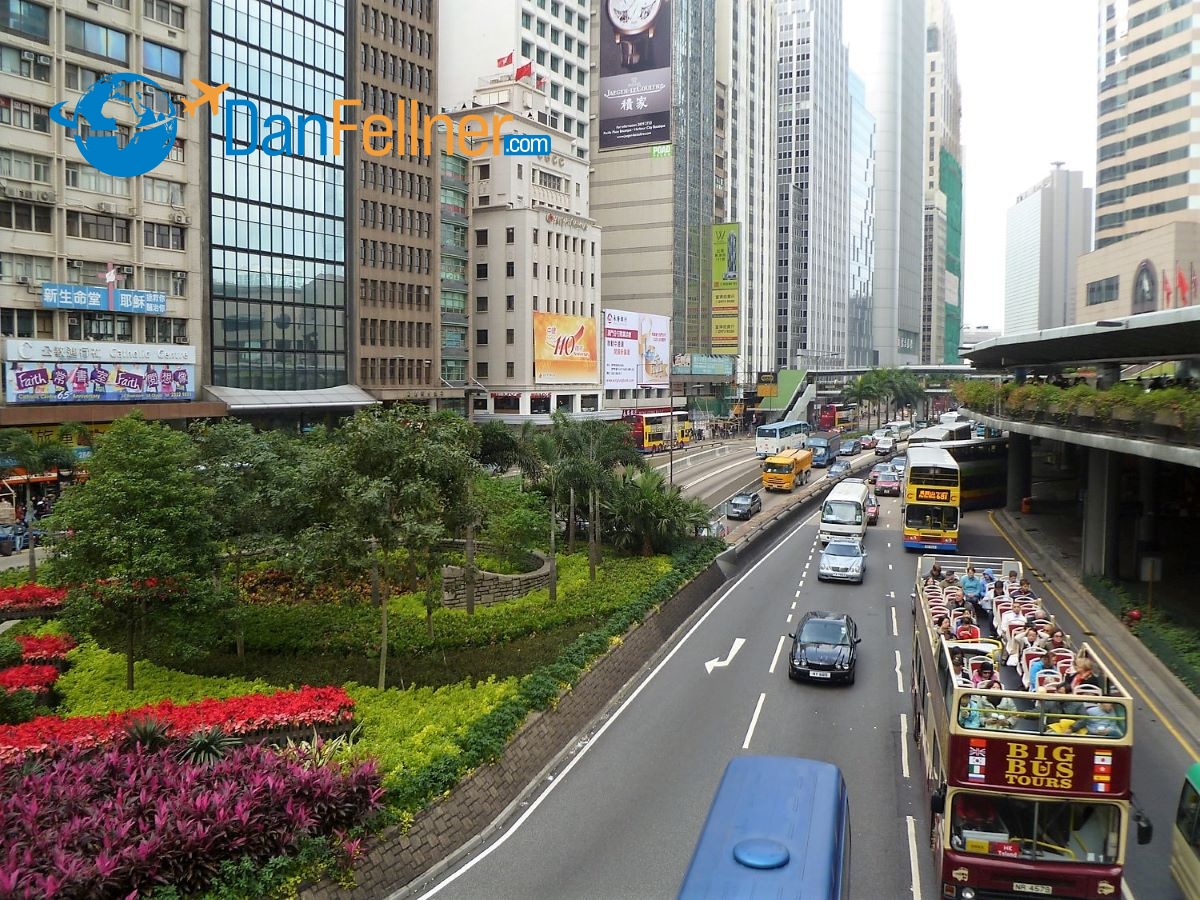
Downtown Hong Kong.
Hong Kong’s economic vitality — its seemingly endless crop of skyscrapers, incessant construction and its busy port — is easily apparent from the top of Victoria Peak, a 15-minute tram ride from the city center. On a clear day, it offers stunning views.
The hub of Jewish life lies halfway down the peak in a part of Hong Kong known as the Mid-Levels, a popular residential area for the island’s general expatriate community. One of Asia’s grandest synagogues anchors a complex that includes two congregations, a Jewish Community Center, a kosher supermarket and a Jewish day school. So many Jews live in the surrounding high-rise apartment buildings that one local rabbi has dubbed the area a “vertical shtetl.”
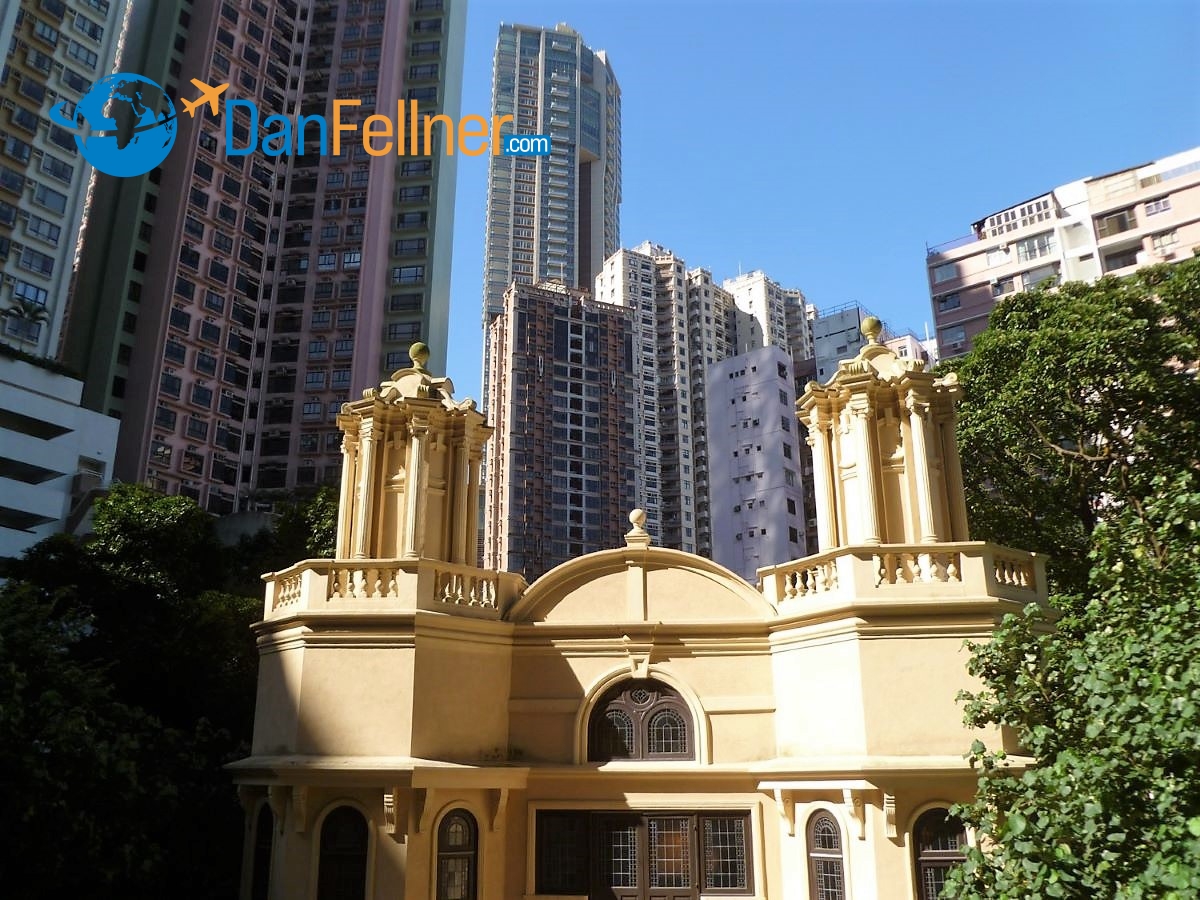
The Ohel Leah Synagogue is dwarfed by Hong Kong skyscrapers.
History
Drawn by trading opportunities with ports in China, Jews began arriving in Hong Kong soon after it became a British colony in 1842. Many came from Iraq and India. In 1858, the small community was formally recognized by the colonial British government, which granted land for the establishment of the first Jewish cemetery, which is still in use today.
Hong Kong census figures indicated only 40 Jews lived on the island in 1872. But by the end of the 19th century, the Jewish population had more than quadrupled, boosted by an influx of refugees from Eastern Europe.

The Hong Kong Jewish Cemetery was established more than 150 years ago.
At the turn of the century, it became clear there was a need for a permanent synagogue to accommodate the growing and prospering community. The Sassoon family, prominent Iraqi Jewish merchants, donated land above the city center on Robinson Road and the money to build the Ohel Leah Synagogue. Opened in 1902, it was named after Leah Gubbay, the mother of the three Sassoon brothers.
Three years later, the Kadoories, another prominent Sefardic family from Iraq and later India, funded the construction of a Jewish Recreation Club next to the synagogue. The Kadoories and other families also established the Ohel Leah Trust, which owns the valuable land surrounding the synagogue, some of which has since been developed into high-rise residential buildings. To this day, the trust remains a vital source of funding for Jewish life in Hong Kong.
The Japanese occupied Hong Kong during World War II and many Jews were held in prisoner-of-war camps. A plaque inside Ohel Leah honors 13 members of the Jewish community who died in defense of Hong Kong between 1941 and 1945. The synagogue was requisitioned by the Japanese but survived relatively intact. Immediately following the war, Hong Kong was a transit point for Jewish refugees leaving Shanghai, which had provided a safe haven for 20,000 Jews fleeing the Holocaust.
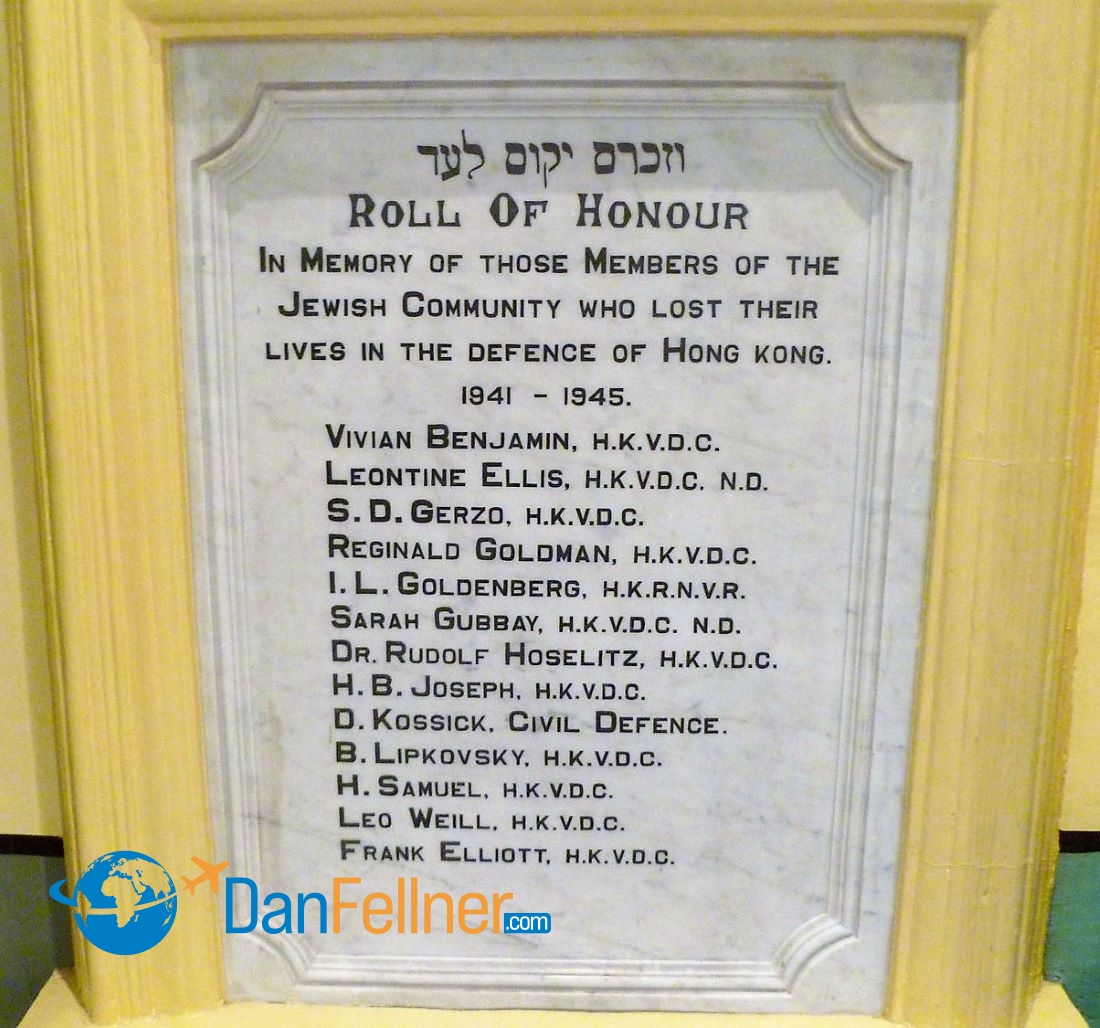
A plaque inside Ohel Leah Synagogue honors 13 members of the Jewish community who died in the defense of Hong Kong between 1941-1945.
In the last half of the 20th century, Hong Kong’s emergence as a global economic power and the opening of trade with China led to a dramatic jump in its Jewish population. Jewish businesspeople, lawyers, doctors, teachers, computer experts and other professionals arrived from America, Western Europe and Israel.
Community
It is believed that Hong Kong is now home to about 5,000 Jews, though estimates vary due to the transient nature of the community. Many are expatriates, living on the island while on short-term work assignments.
The community’s leading venue for cultural and social activities, the Jewish Community Center (70 Robinson Road; www.jcc.org.hk; 852-2801-5440), occupies several floors in a high-rise building next to the Ohel Leah Synagogue. Opened in 1995, it contains a swimming pool, banquet and meeting rooms, meat and dairy kosher restaurants and a kosher supermarket. The JCC complex also hosts one of the campuses of Carmel (www.carmel.edu.hk), the only Jewish day school in East Asia.
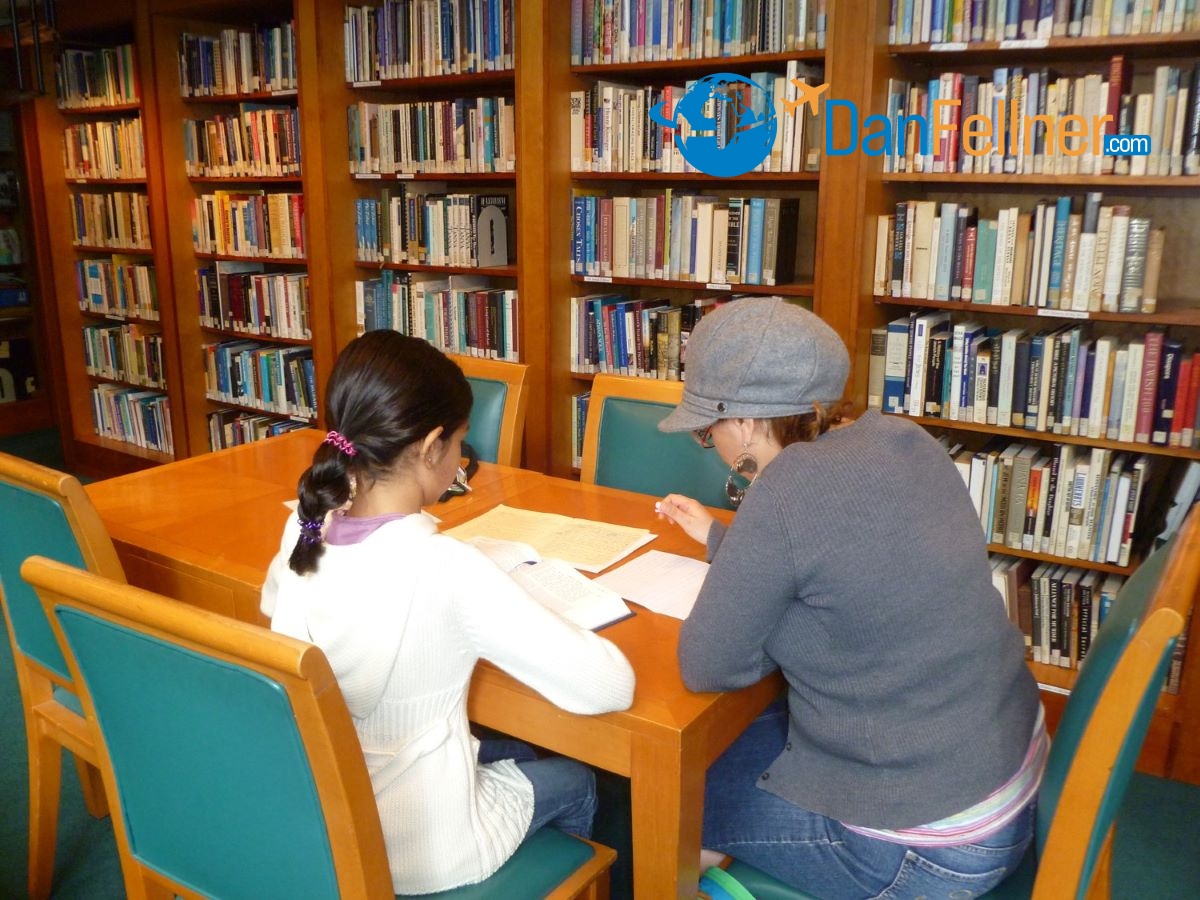
The Judaic Library inside the Jewish Community Center is the largest library in the Far East dedicated to Jewish topics.
With a membership of 190 families, Ohel Leah (70 Robinson Road; www.ohelleah.org; 852-2589-2621) is Hong Kong’s largest congregation. Rabbi Asher Oser, who joined the Modern Orthodox synagogue in 2010, reflects the global diversity of his congregation. He was born in Australia; educated in Canada, Israel and the United States; and most recently was a congregational rabbi in Providence, Rhode Island. “It’s a laboratory for how Jews from different places can get along,” he says of Ohel Leah, which has members from more than 20 countries.
The United Jewish Congregation of Hong Kong (www.ujc.org.hk; 852-2523-2985), with 170 families, is Reform. It was founded in 1988 and meets in an auditorium adjacent to the JCC. It is headed by Rabbi Stanton Zamek, who previously led a congregation in Baton Rouge, Louisiana. He describes UJC membership as about 60 percent American, relatively young, career-oriented and successful. “They are in the top 5 percent of whatever they do,” he says.
Under the leadership of Rabbi Mordechai Avtzon and his wife, Goldie, Chabad-Lubavitch (7-9 Macdonnell Road, Hoover Court, 1st Floor; www.chabadhongkong.org; 852-2523-9770) has had a presence in Hong Kong since 1987. In recent years, Chabad also has opened branches in Kowloon — a peninsula across Victoria Harbor — and on Lantau Island, where the Hong Kong International airport is located.

Ohel Leah Rabbi Asher Oser.
Two Sefardic Orthodox congregations that cater primarily to Israeli expatriates were established in the 1990s. Shuva Israel (61 Connaught Road Central; www.shuva-israel.com; 852-2851-6300), and Kehilat Zion (62 Mody Road in Kowloon; www.kehilat-zion.org; 852-2368-0061) both have glatt kosher restaurants on their premises and are open to the public.
Since the handover in 1997, relations between Israel and Hong Kong have remained solid. In fact, Hong Kong is Israel’s largest trading partner in Asia and Israel is Hong Kong’s second-largest export market in the Middle East.
Israeli artists and musicians perform regularly in Hong Kong venues and the two governments collaborated to stage an Israeli film festival in January 2011.
Sights
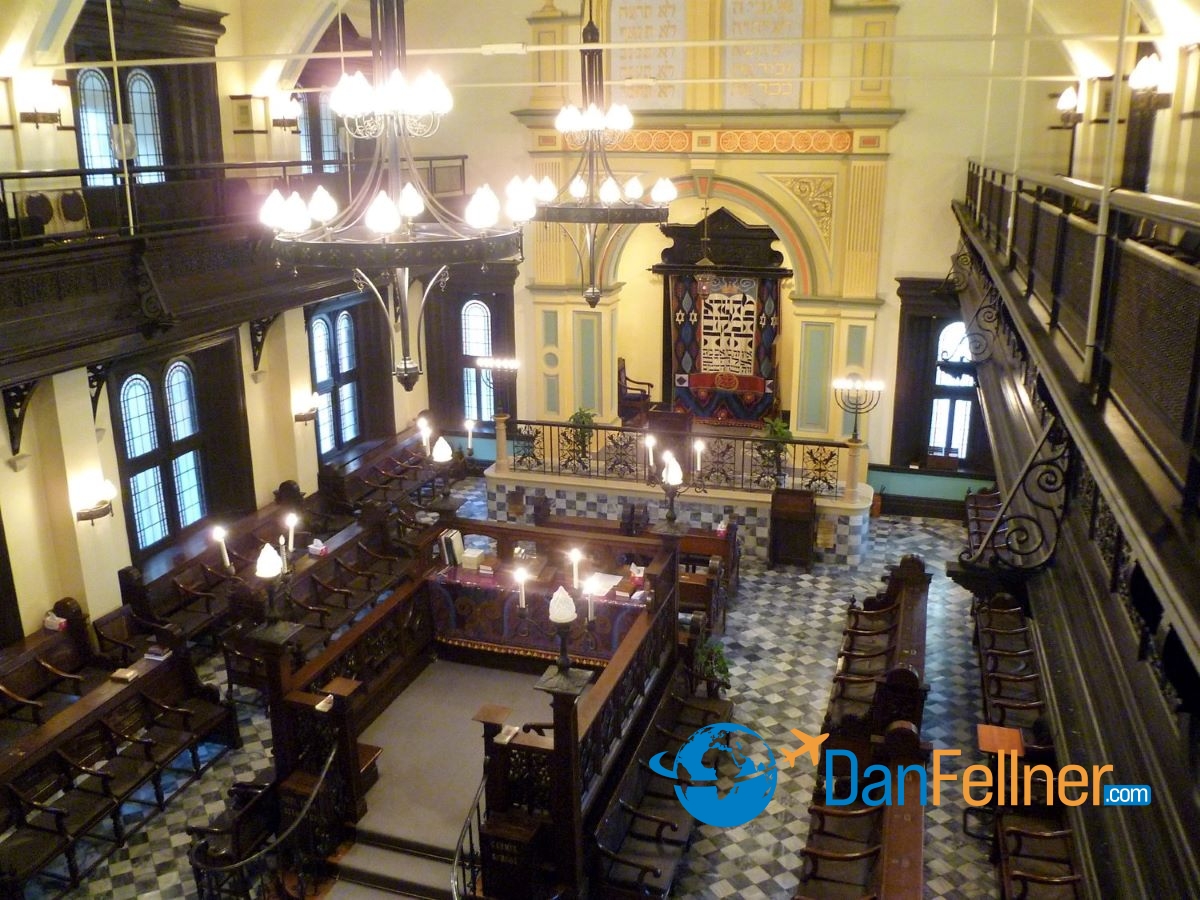
The Ohel Leah Synagogue received a Cultural Heritage Conservation award from UNESCO in 2000.
Billing itself as “the crown jewel of Asian Jewry,” the Ohel Leah Synagogue is indeed a magnificent example of British colonial-Sefardic architecture. The building underwent a $6-million restoration in 1998 to upgrade it to modern standards, while still maintaining its original look. In 2000, the restoration was recognized by UNESCO, which presented the synagogue with an award for Cultural Heritage Conservation.
The two-story, multiturreted synagogue’s main entrance is framed by colonial-style archways and columns. Inside, a large bima and rabbi’s lectern sit below elegant chandeliers hanging from light-blue ceilings. At the front, the Ten Commandments are beautifully engraved in Hebrew on a yellow wall above the Ark.

Ohel Leah’s antique Torah scrolls.
Visitors to Ohel Leah can see several antique Torah scrolls with Sefardic-style encasings housed in the Ark. Some date back to the 18th century.
The synagogue and JCC, in a complex perched on the slope of Victoria Peak, are easily accessible from the hotels and attractions in central Hong Kong. The most conventional way to reach the complex is by taxi, which takes about 10 minutes and normally costs less than $5.
But for those wanting to save some money and experience up-close the sights, sounds and smells of Hong Kong street life, the world’s longest outdoor escalator offers a fun alternative. Riders can get on and off the half-mile-long covered people mover to shop, eat or explore in 29 different places. To get to the synagogue, take the Mid-Levels Escalator to Robinson Road, turn right and walk about five minutes up the road.
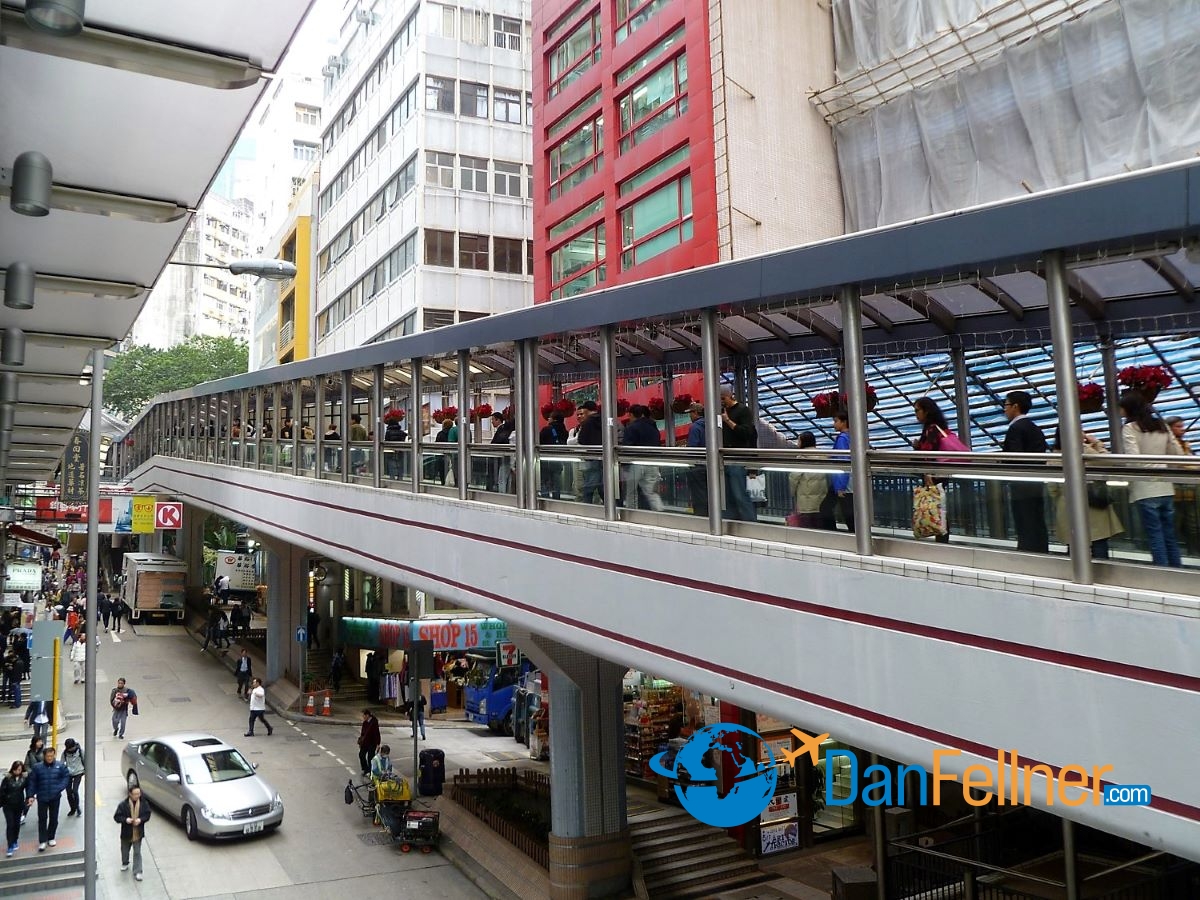
The world’s longest outdoor escalator in central Hong Kong.
The well-maintained Jewish Cemetery (13 Shan Kwong Road) has been in continuous use since it was established more than 150 years ago. It sits next to a Buddhist monastery on a part of Hong Kong Island called Happy Valley, a 15-minute taxi-ride east of the JCC. About 360 Jews are buried there, including members of the Kadoorie family. All the gravestones have been catalogued by the Jewish Historical Society of Hong Kong.
The JCC houses the largest library in the Far East dedicated to Jewish topics. It has more than 4,000 volumes, including a special collection of Sino-Judaic books and 300 audiovisual materials.
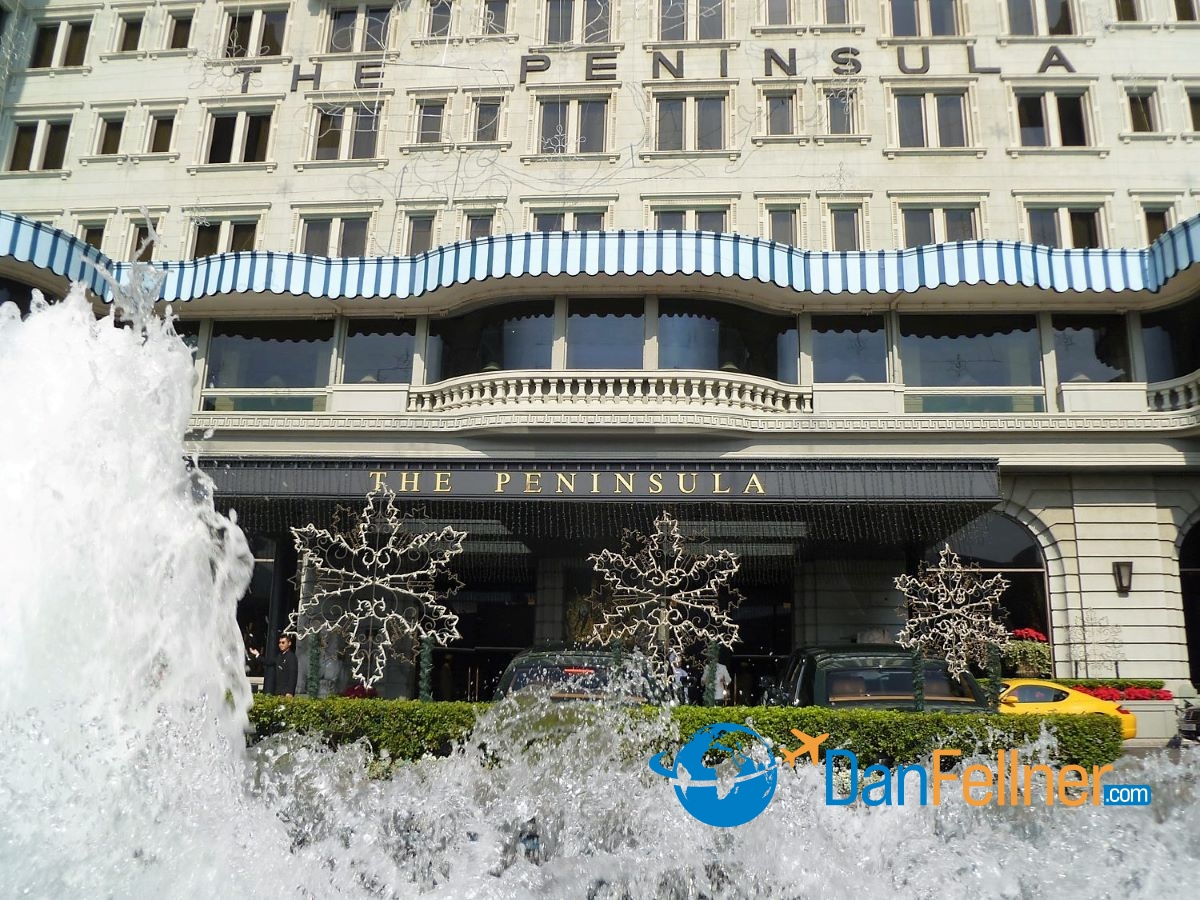
Hong Kong’s posh Peninsula Hotel is owned by the Kadoorie family.
Owned by the Kadoorie family, the Peninsula Hotel in Kowloon (Salisbury Road; 852-2920-2888; www.peninsula.com) has been Hong Kong’s poshest and most famous hotel since it opened in 1928. The Peninsula is known for its fleet of Rolls-Royce limousines and afternoon high tea, one of the few remaining traditions from British colonial days.
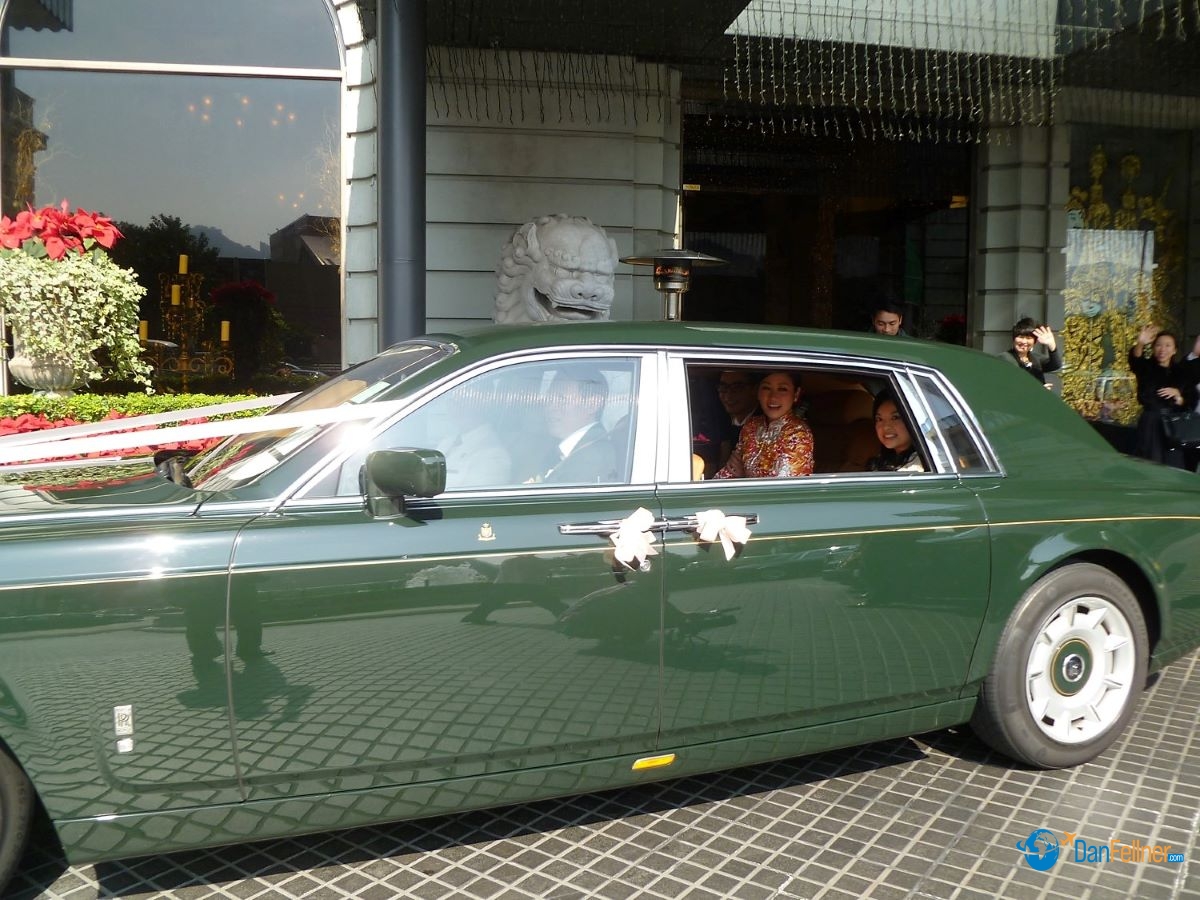
The Peninsula is known for its fleet of green Rolls-Royce limousines.
The Peninsula also played an important role in Hong Kong’s Jewish history. In 1946, about 300 Jewish refugees from Shanghai were stranded in Hong Kong with no place to stay. The Peninsula’s management converted its ballroom into a makeshift dormitory until they were able to leave Hong Kong six months later.
The subway may be quicker, but the most enjoyable way to get to Kowloon from Hong Kong Island is on one of the white-and-green Star Ferries, which have been transporting passengers across Victoria Harbor since 1898. The trip takes less than 10 minutes and costs about 50 cents roundtrip. The views of Hong’s Kong’s skyline are magnificent.
Other Sights
The life of the Chinese revolutionary who helped overthrow the Qing Dynasty is nicely chronicled in the Dr. Sun Yat-Sen Museum (7 Castle Road; 852-2367-6373). Sun was educated in Hong Kong, and the museum offers an interesting glimpse into the island’s history in the late 19th century. It is located just a couple of escalator stops below the JCC.
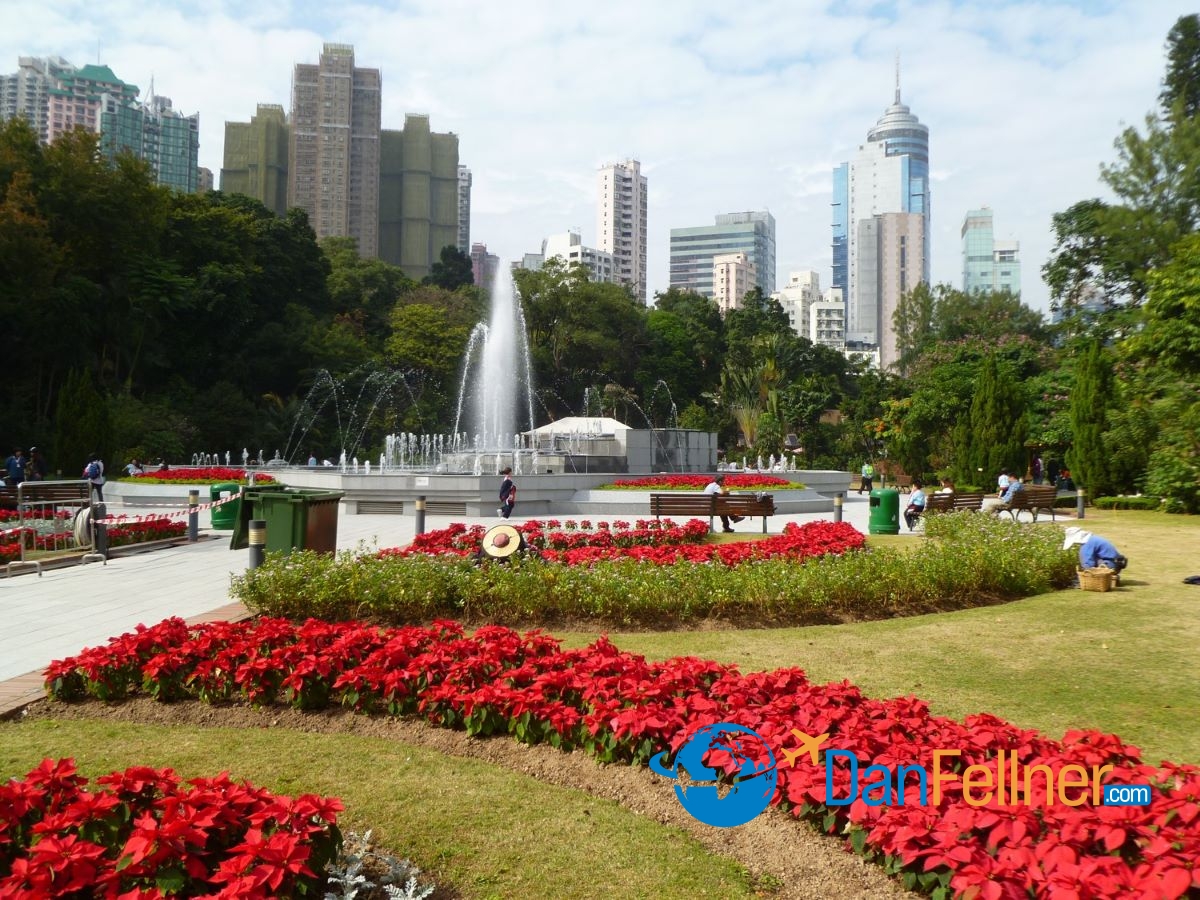
Hong Kong’s Zoological and Botanical Gardens.
With a population of seven million people, Hong Kong is one of the most densely populated areas in the world. A pleasant respite from the crowds and concrete is the Zoological and Botanical Gardens (Upper Albert Road; www.lcsd.gov.hk/parks; 852-2530-0154). From the JCC, it is a 15-minute walk down Robinson Road. Admission is free.
Side Trip
Just a 75-minute ferry ride from Hong Kong across the Pearl River Estuary, the former Portuguese colony of Macau is a popular and easy day trip. Macau was returned to the Chinese two years after Hong Kong. Both are classified by China’s government as “Special Administrative Regions,” meaning that outside of defense and foreign affairs, they have a high level of autonomy. To go from one to the other, visitors must pass through immigration in both places.

The ruins of Macau’s St. Paul’s Church, which was destroyed by fire in 1835.
Macau is best known for its growing number of huge and opulent casinos and has surpassed Las Vegas in gambling revenues. More than 90 percent of its visitors come from mainland China, where gambling is illegal. American casino and resort billionaire Sheldon Adelson recently expanded his Venetian-themed hotel and casino empire to Macau.
It is definitely worth straying from the casinos for at least a few hours to explore Macau’s unique blend of Portuguese-Sino culture. The historic town center, a UNESCO World Heritage Site, features a mosaic pathway that leads past narrow, winding streets to the ruins of St. Paul’s Church at the top of a hill. Built in 1602, most of St. Paul’s was destroyed in a fire in 1835, leaving only its ornate façade.
Fish soup for sale in Macau.
Only a handful of Jews live in Macau, but Glenn Timmermans (gtimmer@umac.mo), an English professor at the University of Macao, is working to raise awareness of Jewish history and culture among the local population. Timmermans, who in 2010 took a group of 23 Chinese from Macau, Hong Kong and the Chinese mainland to Yad Vashem, has created an organization called the Association of Jewish Culture in Macau. It has staged modest Jewish film festivals for the past two years, and Timmermans hopes to organize symposia on the Holocaust and other Jewish-related topics.
Personalities
Sir Matthew Nathan served as Hong Kong’s only Jewish governor, from 1904-07. During that time, he also was Ohel Leah’s honorary president. Nathan was governor when Kowloon’s main thoroughfare was completed. Today, the bustling Nathan Road — named after Sir Matthew — is known as the “golden mile of shopping.”
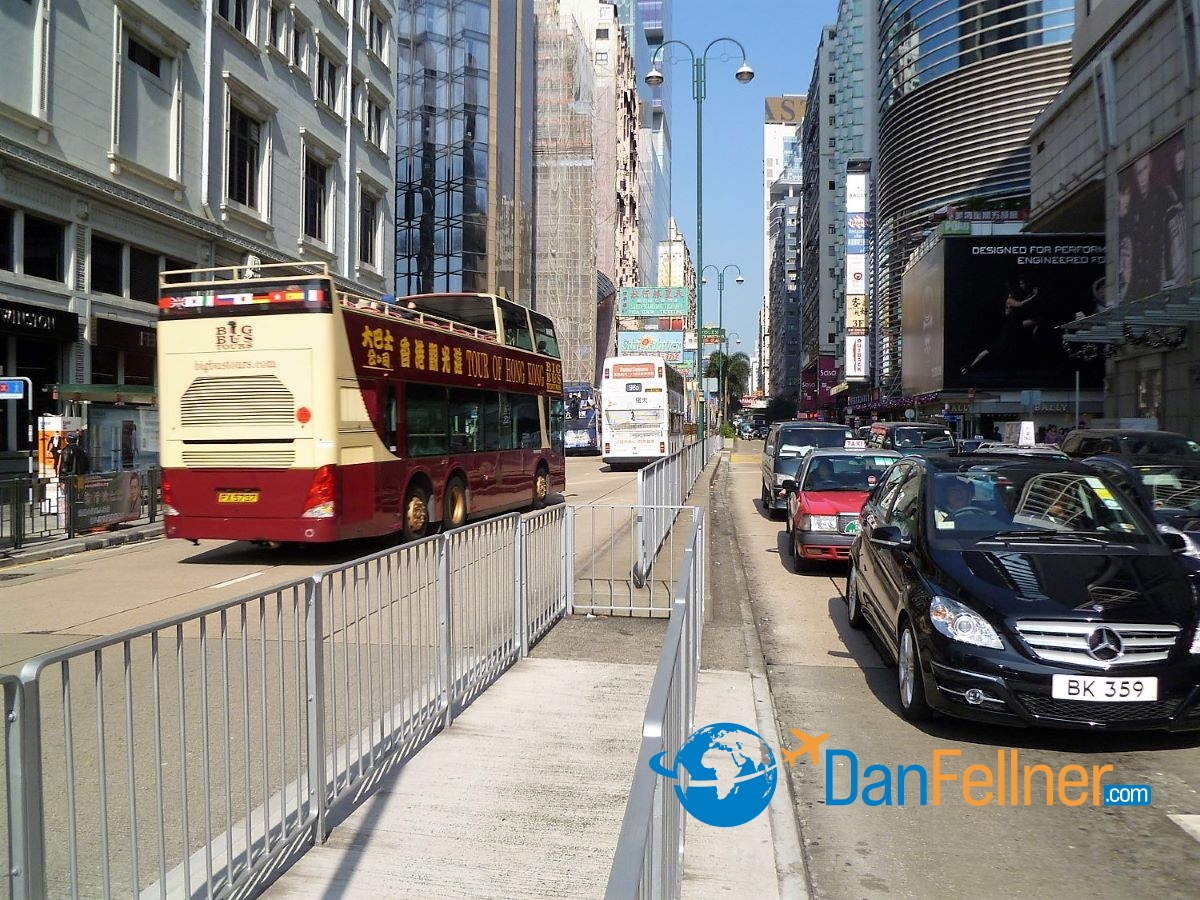
Nathan Road in Kowloon, named after Hong Kong’s only Jewish governor.
Sir Michael Kadoorie, whose family wealth reportedly exceeds $5 billion, comes from a long line of Kadoories who helped play a key role in the development of Hong Kong Jewry. He is the son of Sir Lawrence Kadoorie, a visionary industrialist, hotelier and philanthropist who died in 1993. Sir Michael, a philanthropist in his own right, presides over the family’s holdings, including a sizeable stake in Hong Kong’s leading electricity provider as well as ownership of the Peninsula Hotel.
Reading
Mandarins, Jews, and Missionaries: Jewish Experience in the Chinese Empire (Weatherhill) by Michael Pollak, while not specific to Hong Kong, provides a good overview of Jewish history in the region, including traders along the famed Silk Road and the ancient Jews of Kaifeng.
John Lanchester’s Fragrant Harbor (Penguin) is a historical novel about Hong Kong set from the 1930s to the early 21st century. Lanchester was raised in Hong Kong and paints a vivid picture of the island’s history during the British colonial era, Japanese occupation and postwar boom.
Asian Jewish Life (www.asianjewishlife.org), a quarterly not-for-profit magazine based in Hong Kong, was launched in 2010 by Erica Lyons, an American lawyer who has been living on the island since 2002. Hong Kong also has a monthly Jewish newspaper, Jewish Times Asia (http://jewishtimesasia.org).
Recommendations
For an authentic Cantonese dining experience, try one of the ubiquitous dim sum restaurants. Normally eaten for breakfast or lunch, dim sum – meaning light snack — comes in numerous varieties of dumplings, spring rolls and other concoctions. Diners typically choose several dishes and share with their tablemates. A good dim sum choice for vegetarians is Pure Veggie House (51 Garden Road; 852-2525-0552), located on the third floor of the Coda Plaza shopping center around the corner from Chabad.

Star Ferries in Victoria Harbor take passengers from Hong Kong to Kowloon.
The Bishop Lei International House (4 Robinson Road; www.bishopleihtl.com.hk; 852-2868 0828) is one of the few hotels located in the Mid-Levels and is within easy walking distance of Ohel Leah and the JCC. It has 227 rooms, some with terrific views of the harbor below.
Unlike mainland China, most Western visitors do not need a visa to enter Hong Kong. Those who do come may feel overwhelmed at times by the sheer magnitude of a place referred to by some as Hong Kongcrete.
But in reality, more than 70 percent of Hong Kong is countryside. It’s never hard to find pockets of relative solitude — a Chinese temple or quiet park. And there are few destinations that offer such a fascinating mix of Eastern and Western cultures as well as a chance to witness firsthand one of the world’s most potent economies continuing to steamroll ahead.

Macau’s historic town center.
© 2011 Dan Fellner

